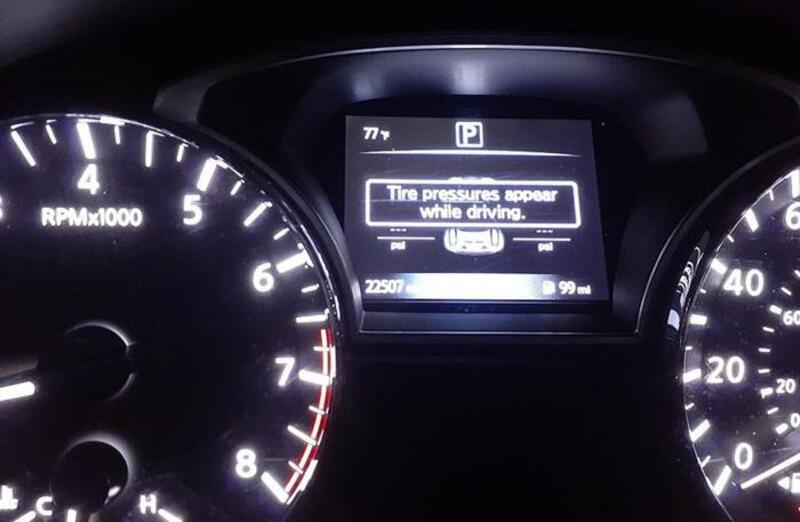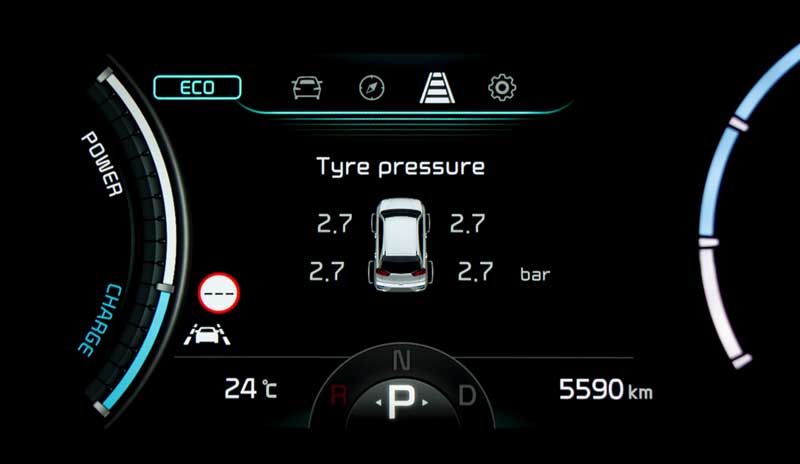Even vehicles like the Nissan Altima, well-known for their durability and budget-friendly nature, are not excluded from faults. Among the various faults that might arise in the Nissan Altima 2013, the TPMS error is very common.
The TPMS error refers to a Tire Pressure Monitoring System error. This error might appear on your dashboard for many reasons, but understanding how the Tire Pressure Monitoring System works will help you greatly tackle this error efficiently.
In this article, we will explain more about what TPMS Error Nissan Altima mean, and ways to manage and fix a TPMS error in your Nissan Altima irrespective of the model year.
Let’s get started!
TPMS Error Nissan Altima 2013 Explained
The tire pressure of a wheel can affect the car in so many ways depending on if it’s high or low. A low tire pressure will cause the vehicle to be driving at an inclined angle, which will cause wear and tear on one or more wheels.
However, driving with high tire pressure on a hot and sunny day can cause the gas within the tires to expand at an abnormal rate and cause the tires to burst as you are driving, which can be very frustrating if your spare tire is having issues and that moment.
The TPMS is an acronym for Tire Pressure Monitoring System, which helps the vehicle monitor all its tire pressure and relay that information to the vehicle’s ECU.
There are two types of TPMS, and include the Direct TPMS and the Indirect TPMS. In the direct TPMS, the TPMS sensors are installed in each vehicle wheel.
While for the indirect TPMS, the TPMS sensor is not installed in each room but rather has a more Central sensor that monitors the tilt of the car or any other variable that could be affected by the tire pressure

Warning Light Mean for TPMS Error in Nissan Altima 2013
Many things can cause your tire pressure warning light to come on on the Nissan Altima. However, if you understand the basic meaning of low tire pressure warning lights, you should be able to tackle the problem.
The TPMS tracks the condition of all the vehicle’s tires by frequently measuring tire pressure, and if the TPMS light is activated on your Nissan Altima, it means that one or more tire pressures are high or low.
You can adjust your tire pressure by using a simple pressure gauge to regulate the needed increase or decrease in pressure.
If the tire pressure warning light shows high pressure, you can easily open the tire valve cap and use a tiny flathead screwdriver or a small rod to press down the release valve pin to allow some tire gas to escape until the pressure returns to normal.
But if you experience a low-pressure indication, you can fix it by pumping more gas into the tire through the valve. If a drop in temperature caused the low tire pressure, then there might be no need to pump the tire, but if a leak caused the common pressure indication, you would need to fix the leak before pumping in more gas.
Also Read: V8 vs V6 Mustang (Which is the Best?)
What Causes TPMS Error in Nissan Altima?
The Nissan Altima TPMS error occurs due to many reasons, and some of these causes include the following;
Incorrect wiring or short circuits can cause the TPMS error in the Nissan Altima. This scenario often occurs after the car has been sent to the repair shop and returned. One major cause of poor wiring is human errors.
The TPMS module may be bad. Once the TPMS module is nearing the end of its life span, it tends to develop faults that cause these TPMS errors to occur.
If the TPMS sensor’s probe in the Nissan Altima is made of an aluminum shaft instead of rubber, the aluminum shaft will corrode after a while. Once the corrosion starts, erroneous data will be sent to the ECU, which can cause the TPMS indicator light on a dashboard to come on.
How to Avoid TPMS Error in Nissan Altima 2013
Whenever the TPMS on a Nissan Altima malfunctions, a warning light will indicate a tire pressure sensor failure.
One way to prevent the TPMS error is to replace your TPMS sensor with a new TPMS sensor every time you change your tire sets, which takes about 4 to 5 years.
The TPMS will not malfunction even if you do not change it after you change your tire set, but you can be assured that your TPMS system will not work at maximum efficiency till the next time you are to change your tires.
Another way to prevent these errors is to replace your TPMS with a new TPMS every five to seven years, equivalent to 60000 to 80000 miles.
TPMS Error Nissan Altima 2013, Here is What to Do
Once you see the TPMS error indication on your dashboard, stop driving and pull over to the side of the road. A TPMS error code can mean many things; some cases are more extreme than others. One of these severe cases is a rapidly deflating tire which can cause damage to your wheel or vehicle’s handling if not attended to immediately.
Here are simple steps to tackle a TPMS error once you see it on your Nissan Altima dashboard.
Stop the car safely and pack it lawfully on the side of the road or a parking lot. you should Switch on your hazard lights to indicate an emergency stop
Next, Use a pressure gauge to check all your tires’ pressure and Inspect your tires and observe for any leakage. If there is a leakage, you need to fix it and If there’s no leakage or you have fixed the leakage, then we can move on to the final step.

How to Reset the TPMS Error in Nissan Altima 2013
Once you have fixed the tire pressure back to the recommended one, resetting the TPMS indicator on your dashboard is advisable.
If you do not have the technical knowledge or tools to carry out the simple fix, it is advisable to employ the services of an expert. Here are steps to reset your TPMS light.
Step 1: Stop your Nissan Altima and switch off its engine
Step 2: Restart your car and drive at 50 mph for 10 minutes before switching it off again.
Step 3: Turn your car key to the on position, but do not start the vehicle. Hold the TPMS reset button under the steering wheel until the TPMS light flashes about three times, then release it.
Step 4: Start your car again, dry it for about 20 minutes, and the indicator will automatically reset.
For more information, check your car owner’s manual, and if you do not have the technical knowledge on how to do this, it is also wise to employ the services of an expert.
Also Read: Toyota vs Honda vs Nissan (Expert Comparison)
Frequently Asked Questions – TPMS Error Nissan Altima 2013
Where is the TPMS sensor located?
The TPMS sensor is located inside the inner part of the tire’s rim.
Do you need to reset TPMS after new tires?
It is advisable that after installing a new set of tires, you reset your TPMS.
Can I reset the TPMS by disconnecting the battery?
Yes! Disconnecting and reconnecting your battery Can fix any glitch in your vehicle’s ECU.
Conclusion – TPMS Error Nissan Altima 2013
The Nissan Altima is a great car, and its TPMS help protects both the wheel and engine from imminent damage. The information above can also help tackle TPMS errors in Nissan Altima models from 2007 to 2013 and the recent models. Therefore you do not need to be scared once your TPMS light comes on, but following the guide above, you can handle whatever follows.

